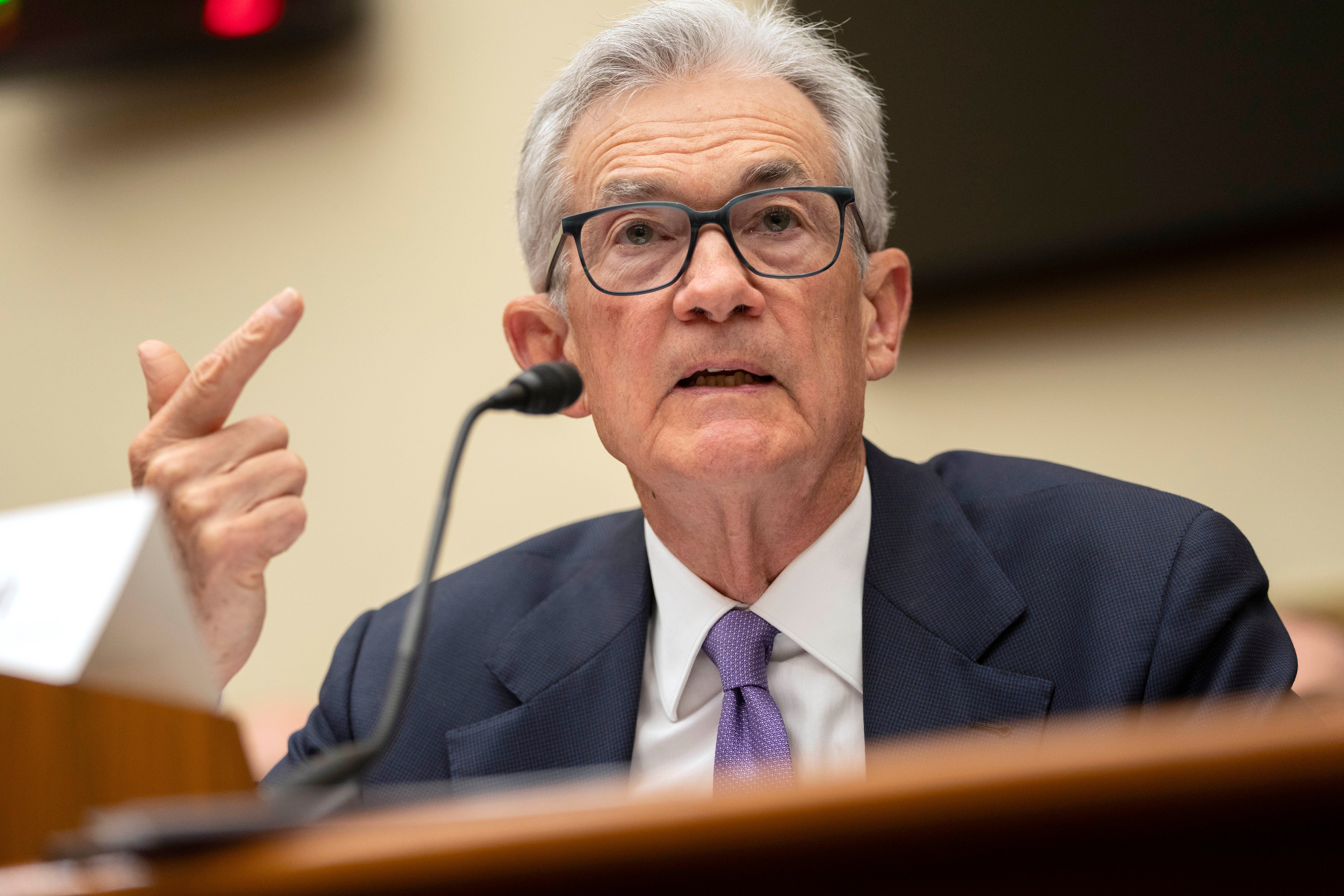Powell may provide hints of whether Federal Reserve is edging close to rate cuts
The latest measures of U.S. inflation have turned out to be hotter than expected

Your support helps us to tell the story
From reproductive rights to climate change to Big Tech, The Independent is on the ground when the story is developing. Whether it's investigating the financials of Elon Musk's pro-Trump PAC or producing our latest documentary, 'The A Word', which shines a light on the American women fighting for reproductive rights, we know how important it is to parse out the facts from the messaging.
At such a critical moment in US history, we need reporters on the ground. Your donation allows us to keep sending journalists to speak to both sides of the story.
The Independent is trusted by Americans across the entire political spectrum. And unlike many other quality news outlets, we choose not to lock Americans out of our reporting and analysis with paywalls. We believe quality journalism should be available to everyone, paid for by those who can afford it.
Your support makes all the difference.Two weeks ago, Chair Jerome Powell suggested that the Federal Reserve was “not far” from gaining the confidence it needed that inflation was headed sustainably toward its 2% target level, which would allow it to start cutting its benchmark interest rate.
It was a tantalizing suggestion, because a cut in the Fed's key rate has typically boosted the economy by reducing the cost of lending, from mortgages to business loans. It might also benefit President Joe Biden's re-election bid, which is facing widespread public unhappiness over price levels across the economy.
Since then, though, the latest inflation measures have turned out to be hotter than expected: A government report showed that consumer prices jumped from January to February by much more than is consistent with the Fed's target. A second report showed that wholesale inflation also came in surprisingly high — a possible sign of inflation pressures in the pipeline that could cause consumer price increases to stay elevated in the coming months.
A key question for Powell and the 18 other officials on the Fed's interest-rate-setting committee is how — or whether — those figures have altered their timetable for cutting rates. Powell will surely be pressed on the topic at a news conference Wednesday after the Fed ends its latest two-day meeting. The central bank's policymakers will also issue their updated quarterly projections for how they foresee the economy and interest rates changing in the months and years ahead.
Their previous such projections in December showed that the officials expected to cut their benchmark rate three times this year, up from a previous forecast of two cuts. Most economists think the latest quarterly projections will again show that the policymakers expect to cut rates three times in 2024, though there's a possibly they could reduce the expected number to two. Economists generally envision the first rate cut coming in June.
On Wednesday, the Fed is considered sure to keep its short-term rate, now at a 23-year high of nearly 5.4%, unchanged for a fifth straight time. And it may not yet be entirely clear to Fed officials whether they have kept rates high enough for long enough to fully tame inflation.
Consumer inflation, measured year over year, has tumbled from a peak of 9.1% in June 2022 to 3.2%. Yet it's remained stuck above 3%. And in the first two months of 2024, the costs of services such as rents, hotels and hospital stayed high, suggesting that high borrowing rates aren't sufficiently slowing inflation in the economy's vast service sector.
While the Fed's rate hikes typically make borrowing more expensive for homes, cars, appliances and other costly goods, they have much less effect on services spending, which doesn't usually involve loans. With the economy still healthy, there is no compelling reason for the Fed to cut rates until it feels inflation is sustainably under control.
At the same time, the central bank faces a competing concern: If it waits too long to cut rates, a long period of high borrowing costs could seriously weaken the economy and even tip it into a recession.
Powell warned of such an outcome when he testified to the Senate Banking Committee this month. He said the Fed was becoming more confident that inflation is continuing to slow, even if not in a straight line.
“When we do get that confidence, and we’re not far from it," he said, "it’ll be appropriate to begin” rate reductions “so that we don’t drive the economy into recession.”
Despite widespread evidence of a sturdy economy, there are signs that it could weaken in the coming months. Americans slowed their spending at retailers in January and February, for example. The unemployment rate has reached 3.9% — still a healthy level, but up from a half-century low last year of 3.4%. And much of the hiring in recent months has occurred in government, health care and private education, with many other industries barely adding any jobs.
Like the Fed, other major central banks are keeping rates high to ensure they have a firm handle on consumer price spikes. In Europe, pressure is building to lower borrowing costs as inflation drops and economic growth stalls. The European Central Bank’s leader hinted this month that a possible rate cut wouldn’t come until June, while the Bank of England isn’t expected to open the door to any imminent cut when it meets Thursday.
Japan's central bank, by contrast, is moving in the opposite direction: On Tuesday, it raised its benchmark rate for the first time in 17 years, in response to rising wages and inflation finally nearing its 2% target. The Bank of Japan was the last major central bank to lift its key rate out of negative territory, ending an unusual period that had led to negative rates in many European countries as well as in Japan.